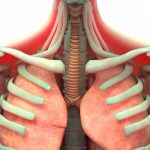Breathing techniques for SUP (Stand up Paddle)
Breathing techniques
In past blog posts we covered the importance of proper breathing techniques and how to fix improper breathing habits that we all develop over time as a result of bad posture etc. To recap briefly it all goes back to diaphragmatic breathing/ belly breathing. When we’re born this is the way we naturally breathe but as we age we quickly develop bad habits that lead us to breathe from our chest instead of our diaphragms resulting in shortness of breath, and reduced stamina.
In this blog post we will learn how to apply the principles of basic (proper) breathing techniques to our SUP experience-whether it be for exercises, race training, or simply recreation.
Bad posture is the #1 cause of poor breathing technique. Next time you’re out for a paddle take a gaze and see how many athletes are out there with slouched spines. It’s a seemingly simple fix but bad habits die hard.
Make a conscious effort to bring awareness to your posture as well as your breath. “When you’re paddling, avoid the “look down and slouch” mistake and instead make sure that your spine is straight, your shoulder blades are back and down, your chest is puffed out, your abdominal muscles are contracted at about twenty percent of what you’d be going for during a plank or other core exercise, and your gaze fixed in front of you. This will allow you to stomach breathe naturally, and to achieve maximum performance on your board. “-www.SUPthemag.com
When you’re training or racing increasing your lung capacity is key to improving your performance. This is great news as there are numerous natural ways to increase your lung capacity without having to turn to supplements or harmful chemicals. If you’re already training regularly with you SUP chances are you’re getting a pretty good cardiovascular workout this alone is great for improving your endurance and increasing you lung capacity. If you’re unable to get out on the water at least three times a week to get your heart rate up for a minimum of 30 minutes at a time you can always turn to land workouts. Running, cycling, swimming and cardio fitness classes are great alternatives when you can’t get out on your board.
Additionally, you can practice breathing exercises that will increase your lung capacity and help you tap into proper breathing when you go back to regular training. Any diaphragmatic breathing exercise you would practice in a yoga class would be very beneficial. Alternatively, if you’d like to maximize your time consider using a breathing fitness trainer like Expand-A-Lung. Because the Expand-A-Lung has the added benefit of variable resistance for both the inhale and exhale it makes your exercises more efficient. Consider training with weights and without weights.
Both options have their benefits but when time is of the essence added that extra weight can help maximize your workout in a shorter amount of time. Breathing resistance is like adding weights for training your respiratory muscles (your diaphragm and your intercostals).
We’ve covered your training off the ward let’s bring it back to your board “when we’re paddling hard and are tempted to break natural breathing patterns as our bodies try to deal with the increased demands on the cardiovascular system. If we look at elite marathon runners, they have a breathing rhythm that coincides with their stride, and which helps them achieve peak oxygen uptake even as they pick up their pace. So, they might take four strides as they inhale and four strides as they exhale. This is a solid strategy for SUP as well.”-www.theSUPmag.com
In the same way we maximize our stroke to breath ratio as swimmers we can apply the same concept to paddling. Start by inhaling every two strokes, and then exhaling every two strokes. Be sure to exhale as the blade enters the water. Play around with different breathing patterns and see what’s best for you. Remember the idea here is that if you alternate inhale and exhale on every stroke you will likely be breathing shallower and will not maximize your stamina or endurance. By elongating your inhales and exhales you breathe more efficiently and reduce the oxygen demand from your muscles as you are providing them with a sufficient supply.
Next time you’re out in the water tap into your breath. Focus on breathing as one of your training techniques over time it will become second nature and as it does you will see the benefits in your health and your performanc




